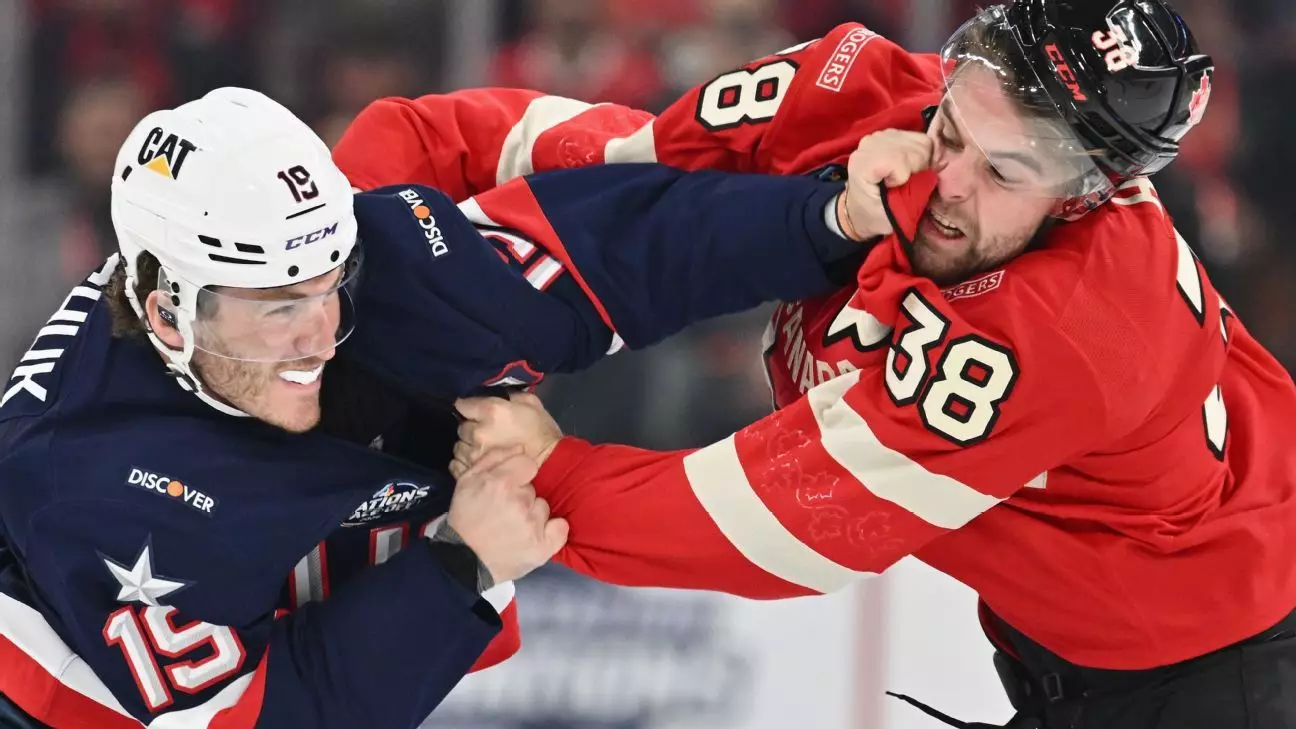The recent clash between Team USA and Team Canada at the NHL 4 Nations Face-Off produced an electrifying atmosphere that not only captivated fans but also reignited discussions about the state of hockey. The thrilling match ended with a score of 3-1 in favor of the USA, but the implications of this game stretched far beyond the scoreboard. With a peak audience of 5.4 million American viewers, this game marked a historic return to “best on best” international competition, reminiscent of previous high-stakes encounters.
Canadian coach Jon Cooper expressed his frustration with the result but acknowledged the significance of the event for the sport. “The game is in a better place because last night’s game existed,” he stated, highlighting the importance of such competitions in the evolution of hockey. The encounter served as a grand stage for showcasing elite talent, with many players representing their countries for the first time in a high-stakes tournament setting.
The game’s commencement was nothing short of explosive. Three fights erupted within the first nine seconds, overshadowing any preconceived notions of a traditional opening face-off. Players Matthew and Brady Tkachuk, along with J.T. Miller, set a frenetic tone that seemed to pique the interest of fans and viewers alike. Jesper Bratt of Team Sweden aptly noted the unexpected intensity, stating, “I maybe didn’t expect three fights in the first nine seconds,” as if this cacophony of early aggression elevated the significance of the moment.
Particularly noteworthy was Matthew Tkachuk’s record-setting fight, which marked the fastest opening altercation in NHL international history. Such acts not only riled up the crowd but also showcased the raw emotions tied to national representation and rivalry. Travis Konecny, a forward for Canada, made an interesting observation about the nature of fighting in hockey. “It’s a war out there…you put the flag behind the meaning of something, and guys’ switches just kind of flip,” he explained, further emphasizing the psychological factors fueling the players’ intensity during international competitions.
Fighting: A Point of Contention
Though fighting in hockey remains a polarizing topic, it undoubtedly played a pivotal role in this match. Coach Cooper acknowledged the skepticism surrounding fighting, yet he pointed out how it can galvanize teams and elevate the competition. “You can say whatever you want about fighting, but that was what ignited the game,” he asserted. This perspective reveals that what may seem contentious in other sports is often regarded as a fundamental aspect of hockey, embodying its passionate and rugged nature.
The emotional crescendo of this game was palpable not just among the players but also amongst the spectators who were deeply engaged in a fierce rivalry that transcends mere wins and losses. U.S. forward Jack Hughes noted that the match sparked discussions outside the realm of hockey, underscoring its broad appeal and the passion it invigorated.
The Aftermath: Looking Toward the Future
In the aftermath of such a monumental event, the potential ramifications for the sport of hockey are profound. U.S. center Vincent Trocheck made an astute observation comparing the intensity of the 4 Nations tournament to that of playoff hockey, stating, “You can’t really compete with that.” This sentiment reinforces the idea that international rivalry games can elevate the sport in ways typical All-Star events cannot. They resonate deeply with both players and fans, creating a narrative rich with pride, competitiveness, and nationhood.
Sweden’s coach Sam Hallam echoed this sentiment, praising the emotions that emerge in such heated rivalries, while Finnish forward Erik Haula noted the game’s beauty and significance. Their reactions highlight the universal acknowledgment of the richness of hockey culture, particularly during such high-stakes international encounters.
Reflecting on the potential long-term impact, U.S. Coach Mike Sullivan remarked that moments like these could inspire future generations of players. He drew parallels to pivotal events in hockey history, such as the iconic Miracle on Ice of 1980. This potential to inspire youth participation in the sport positions such rivalry games as vital elements in hockey’s legacy.
As the tournament unfolds, Team Canada faces a precarious situation against Finland, while the USA prepares to square off against Sweden later in the week. The high stakes and the ever-present intensity promise to keep fans on the edge of their seats, augmenting the narrative that began with this recent showdown. The flourishing rivalry between these nations serves not only as a compelling spectacle but also as a testament to the tenacity and spirit that define hockey. It reminds us that, at its core, the sport is about more than just the games; it’s about pride, passion, and the unyielding quest for glory.


Leave a Reply